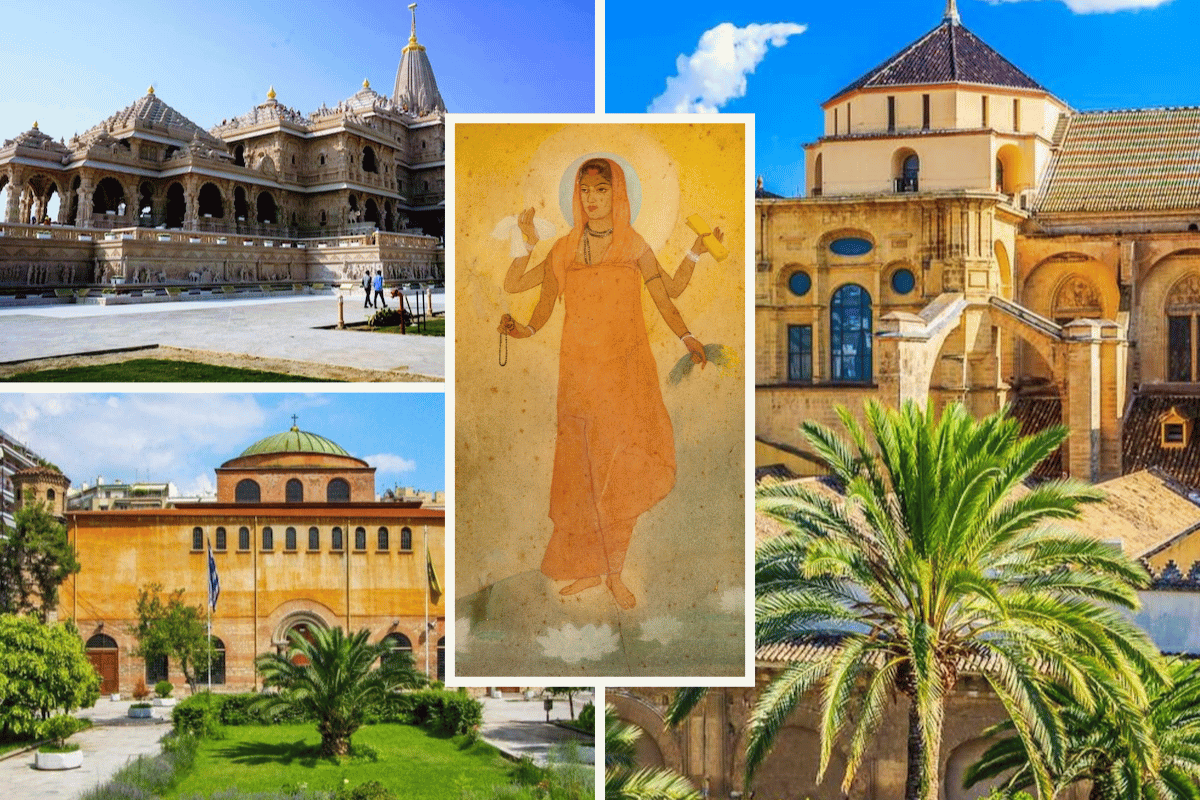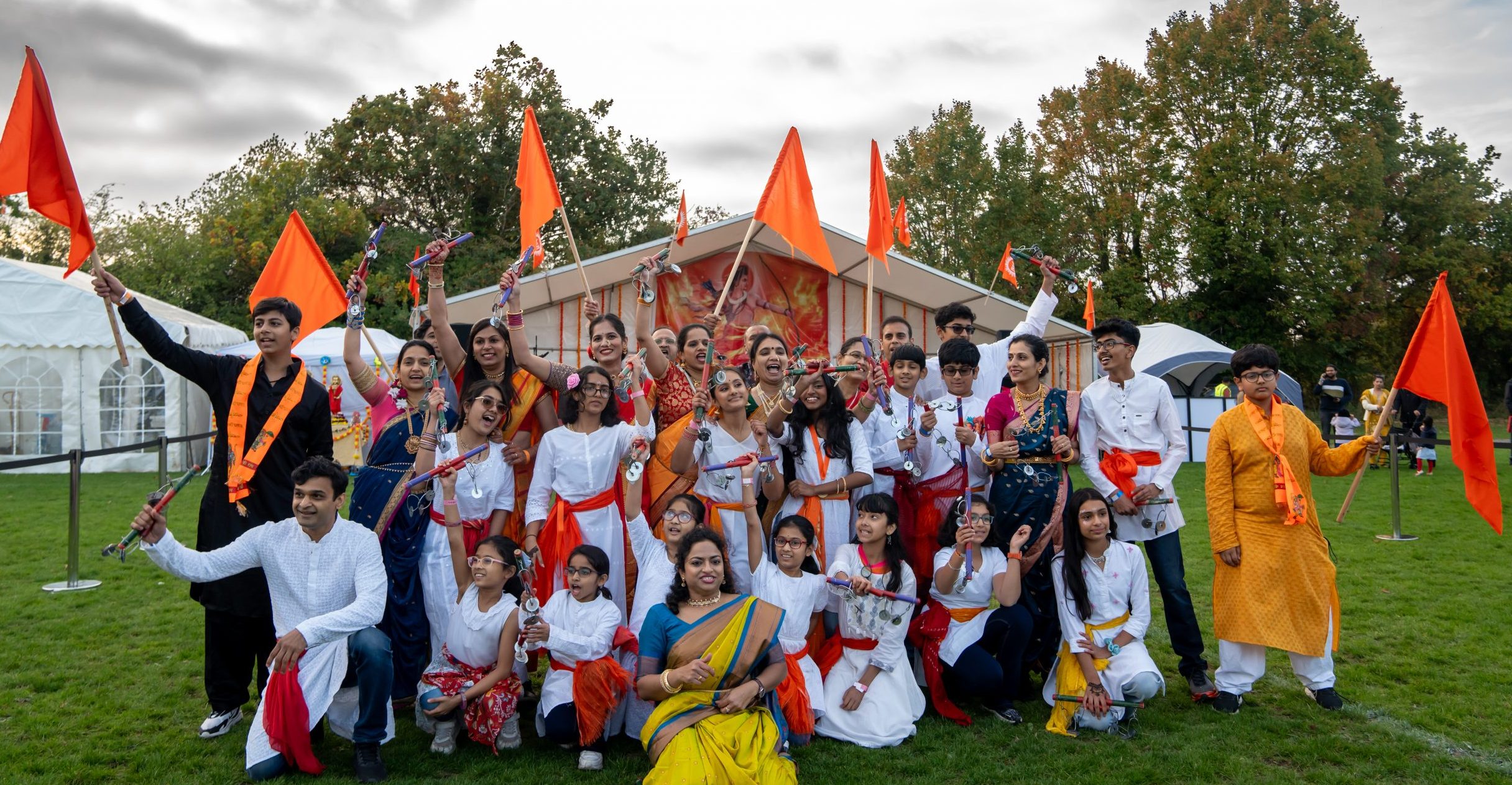
In Bhārat (India), several calendars have been established for centuries, to mark seasons and help organise the Bhāratiya festivals and astrology Typically, calendars are based on the motion of the moon, the sun, or a combination of both.

The Gregorian Calendar, a solar calendar, is based on the position of the earth in its orbit around the sun while the Lunar calendars, such as Hijri (Iranian) or Islamic calendars are based on the motion of the moon.
Śaka (Shaka) Samvat is a lunisolar calendar, that was adopted as the official calendar on 22nd March 1957 and is known as the Indian National Calendar or Saka Calendar. It is used in news broadcasts and government communications. Saka Calendar is also used in Java Bali and the Philippines. Śaka Samvat is generally 78 years behind the Gregorian Calendar, except from January to March when it is behind by 79 years.
Chaitra is the first month of the Saka calendar and begins on the March Equinox Chaitra has 30 days and starts on 22 March, except in leap years when it has 31 days and starts on 21 March. The months in the first half of the year all have 31 days, to consider the slower movement of the sun across the ecliptic at this time.
Indian Astrophysicist Meghnad Saha was the head of the Calendar Reform Committee under the aegis of the Council of Scientific and Industrial Research (CISR). The committee was tasked to prepare a calendar after a detailed study of thirty different existing calendars in different parts of Bhārat (India) and integrating regional and local traditions and sentiments.
The Vikram Samvat is used in the northern and western regions of Bhārat and is a lunisolar calendar. The Vikram Samvat was named after the legendary King Vikramaditya of Ujjain. He defeated the invading Śakas.
Vikram Samvat is generally 57 years ahead of the Gregorian Calendar, except from January to April when it is ahead by 56 years. It is one of two official calendars of Nepal, alongside Nepal Sambat. In Bhārat, it is used in several states.
The traditional Vikram Samvat calendar, used in Bhārat by Hindus, Sikhs, and Pashtuns, uses 12 lunar months and a solar sidereal year. The lunar year begins with the new moon of the month of Chaitra.
On average, the length of a lunar month on Earth is 29 days, 12 hours, 44 minutes, and 3 seconds, known as the synodic period (the time taken by the moon to orbit Earth with respect to fixed stars and at the same time Earth-Moon system advancement around the Sun at the same time). This makes a lunar year only 354 days 8 hours 48 mins 34 secs long on average, while an average sidereal year lasts about 365 days 5 hours 48 mins 45 secs.
To make up the difference of 10 days 21 hours 11 seconds, an intercalary month, called AdhIK (Purushottam) is added in accordance to the Metonic cycle (a period of almost exactly 19 years after which the lunar phases recur approximately at the same time of the year) roughly once every three years (or 7 times in a 19-year cycle) to ensure that festivals and crop-related rituals fall in the appropriate season and in which the Sun does not change the Zodiac.
Adhikmaas is considered to be the more auspicious month of the year and is referred to as the month of Purushottam (the supreme being). Those observing extra penance, bhakti (devotion), and benevolence during this month gain extra blessings from Bhagwan and their sins are washed away. Although auspicious month for special puja and worship of Bhagwan Vishnu, weddings and housewarmings are avoided.
Two types of lunar calendars used in Bhārat
- Amāvasyant (Amāvasy + Ant) – The months end on the darkest night (Amāvasya). This calendar is followed in (four southern states, Gujarat, Maharastra, West Bengal and North-Eastern states(
- Pūrṇimānt (Pūrṇimā + Ant) – The months end on the day of the full moon (Purnima). This calendar is followed in Northern and central states of country
The festivals will still fall on the same day, but the name of the Hindu month may be different.
Lunar Metrics
A lunar year consists of 12 lunar months, and each month has two fortnights (known as Paksha), with a variable duration ranging from 29 to 32 days.
A masa, or lunar month (29 days, 12 hours, 44 minutes, and 3 seconds) is divided into paksha. Each month has 30 tithis, which vary in length from 20 to 27 hours
A paksha is a lunar fortnight and consists of 15 lunar days (tithis). The waxing phase, beginning with the day after the new moon (Amavasya), is called Shukla paksha (the bright fortnight). The waning phase is called Krishna Paksha (the dark fortnight)
A tithi is the “duration of two faces of the moon that is observed from Earth and is the time taken for the longitudinal angle between the Moon and the Sun to increase by 12 Deg. Tithis begin at various times of the day and vary in duration approximately 19 to 26 hours.
- A ritu (Season) is two masas
- An Ayana is three ritus
- A year is two ayanas
Hindu Months (Lunar) and equivalent Gregorian months)
|
Chaitra |
March – April |
|
Vaiśākha |
April–May |
|
Jyeṣṭha |
May–June |
|
Āṣāḍha |
June–July |
|
Śravaṇa |
July–August |
|
Bhādrapada |
August–September |
|
Aśhwina |
September–October |
|
Kārtika |
October–November |
|
Mārgaśīrṣa |
November–December |
|
Pauṣa |
December–January |
|
Māgha |
January–February |
|
Phālguna |
February–March |
Tithis and presiding deities
The deities rule the various Tithis. The energy and vibrations of the Tithis are encoded into the lordship of the Deities. For instance, Purnima is governed by Naaga, indicating some secretive side of this Tithi.
As per Narada Purana (56.133-135), the presiding deities of each tithis are –
|
S. No. |
Tithī |
Shukla Paksha – Deity |
Krishna Paksha – Deity |
|
1 |
Pratipadā |
Brahma |
Durgā |
|
2 |
Dvitiyā |
Fire |
Dandadhārā (Yama) |
|
3 |
Tritiyā |
Virinchi |
Śivā |
|
4 |
Chaturthī |
Viṣṇu |
Viṣṇu |
|
5 |
Panchamī |
Gaurī |
Hari |
|
6 |
Śaśtī |
Ganeśa |
Ravi. |
|
7 |
Saptamī |
Yama |
Kāma |
|
8 |
Aṣtmī |
Sarpa |
Śañkara |
|
9 |
Navamī |
Chandra |
Kālādhara |
|
10 |
Daṣmī |
Kārtikēya |
Yama |
|
11 |
Ekādaśī |
Sūryā |
Chandra |
|
12 |
Dvādaśī |
Indra |
Viṣṇu |
|
13 |
Trayodaśī |
Mahendra (Indira) |
Kāma |
|
14 |
Chaturdaśī |
Vāsva |
Śivā |
|
15 |
Pūrṇimā |
Nāga |
|
|
16 |
Amāvasya |
Pitrs |








